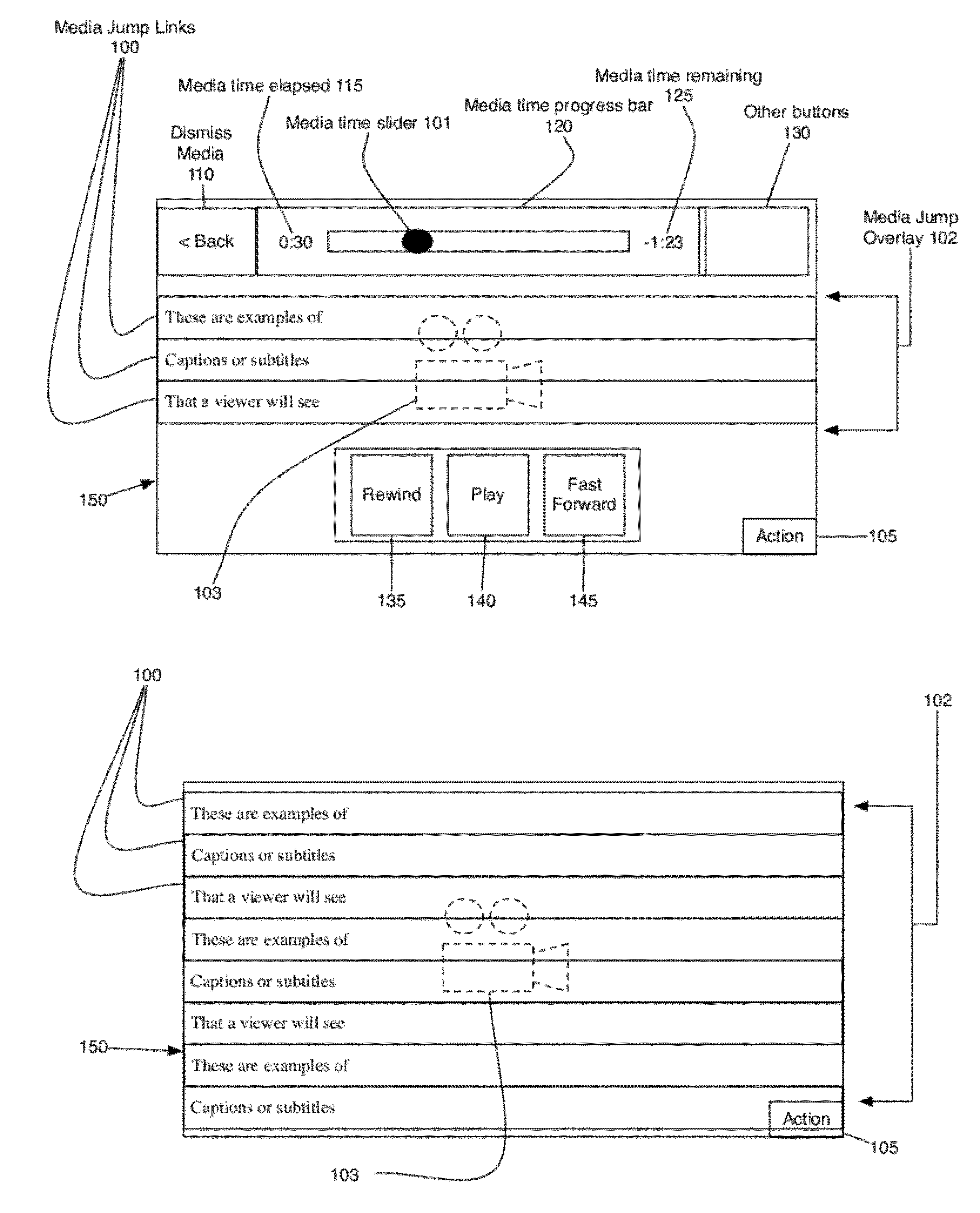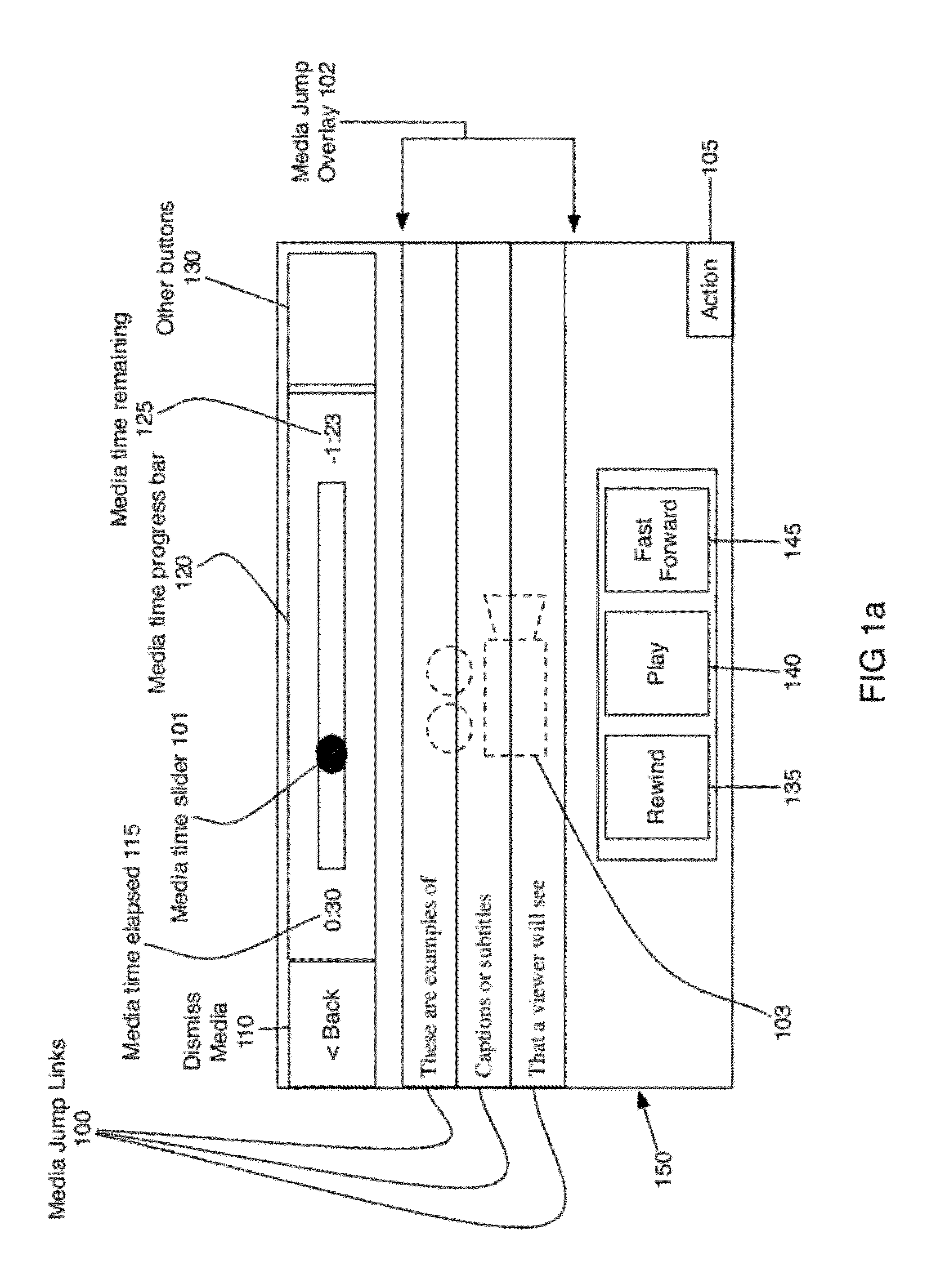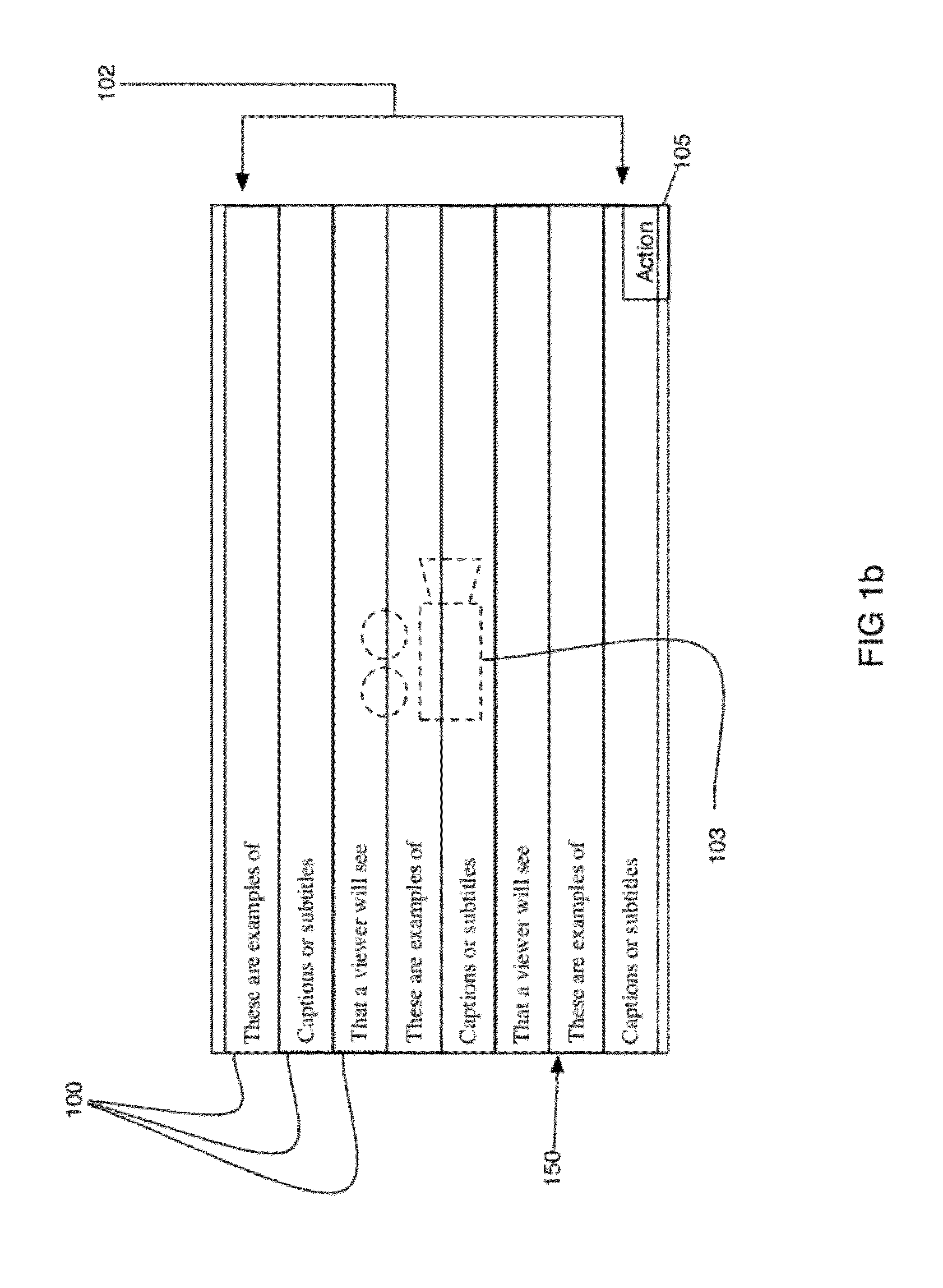Method for Creating and Navigating Link Based Multimedia
a multimedia and link technology, applied in the direction of selective content distribution, instruments, carrier indicating arrangements, etc., can solve the problems of large screen real estate consumption, inability to interact with a phrase, impractical for small handheld devices, etc., to achieve rapid and accurate navigation, rapid subtitle timing, and the effect of avoiding the loss of screen real esta
- Summary
- Abstract
- Description
- Claims
- Application Information
AI Technical Summary
Benefits of technology
Problems solved by technology
Method used
Image
Examples
Embodiment Construction
[0038]The present invention is a method, in combination with a computer device, for defining, editing, and jumping to predefined points in time in audio, video and other multimedia playback by selecting a point of interest from a scrolling list of choices. These choices are presented to the user in the form of media jump links (100) and media jump overlays (102). The media jump overlay (102) is a scrolling layer or window containing one or more media jump links (100), typically containing text elements representing lyrics or subtitles, and optionally graphic elements. A media jump link (100) is a repository comprising one or more visual elements such as text, graphics, and animation, to include visible audio lyrics, visible audio transcripts of video media, visible text, and visible graphics. A media jump link (100) can actually contain text in one or more fonts, text in one or more languages, graphics, animation—basically anything visual. To this end, a media jump link (100) also c...
PUM
 Login to View More
Login to View More Abstract
Description
Claims
Application Information
 Login to View More
Login to View More - R&D
- Intellectual Property
- Life Sciences
- Materials
- Tech Scout
- Unparalleled Data Quality
- Higher Quality Content
- 60% Fewer Hallucinations
Browse by: Latest US Patents, China's latest patents, Technical Efficacy Thesaurus, Application Domain, Technology Topic, Popular Technical Reports.
© 2025 PatSnap. All rights reserved.Legal|Privacy policy|Modern Slavery Act Transparency Statement|Sitemap|About US| Contact US: help@patsnap.com



